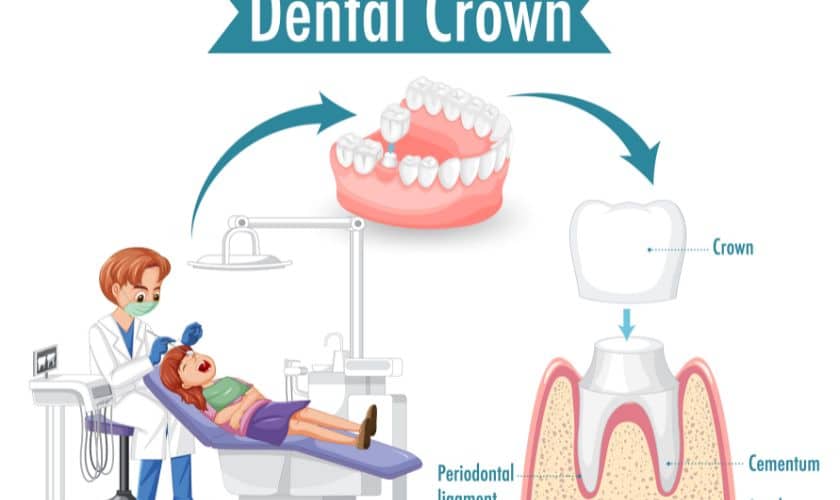Are you self-conscious about your smile because of missing or damaged teeth? Crowns and bridges can help restore your confidence and improve the function of your mouth. But when is the right time to consider them? We’ve got you covered! In this blog post, we’ll discuss everything you need to know about crowns and bridges, from what they are to how they’re placed. Get ready for a smile makeover that will leave you feeling better than ever before!
What are crowns and bridges?
Crowns and bridges are two common options for restoring your smile. Crowns are also known as “caps” and are used to cover a tooth that is damaged or decayed. Bridges are used to replace one or more missing teeth. Both are made of durable materials, such as porcelain or ceramic and are designed to match the natural color of your teeth.
When are crowns and bridges necessary?
Crowns and bridges are necessary when the existing teeth are not strong enough to support a filling, or when there are gaps in the teeth that need to be filled. Crowns can also be used to protect a tooth that has been damaged by wear or decay. Bridges are used to fill gaps in the teeth, and they can be made from different materials including porcelain, metal, or ceramic.
The Benefits of Crowns and Bridges
Crowns and bridges are two common dental procedures used to restore the function and appearance of teeth. Both procedures have their own set of benefits, which can help patients decide which is right for them.
source: Dentosphere: World of Dentistry
Crowns are often used to restore a tooth that has been damaged by decay or injury. They can also be used to support a tooth with a large filling. Bridges are commonly used to replace one or more missing teeth. Bridges can also help prevent the remaining teeth from shifting out of place.
Benefits of crowns include:
1. Restoring the function of a damaged or decayed tooth
2. Supporting a tooth with a large filling
3. Improving the appearance of a tooth
4. Protecting a weak tooth from further damage
5. Holding together parts of a cracked tooth
6. Covering up stained or discolored teeth
7. Covering up misshapen or oddly shaped teeth
8. Restoring chewing function for patients with missing teeth
Benefits of bridges include:
1. Replacing one or more missing teeth
2. Preventing remaining teeth from shifting out of place
3. Improving chewing function
4. Restoring smile aesthetics
The disadvantages of crowns and bridges
There are a few disadvantages to getting crowns and bridges to restore your smile. First, they can be expensive. Insurance may not cover the entire cost of the procedure, so you may have to pay out of pocket. Second, the procedure can be time-consuming. It can take two or more visits to the dentist to get the crown or bridge fitted and placed. Third, there is a small risk of complications associated with any dental procedure, such as infection, gum disease, or tooth decay. Finally, crowns and bridges are not permanent and will eventually need to be replaced.
How to care for your crown or bridge
When a tooth is damaged or missing, it can have a major impact on your smile. These are two common options for restoring your smile. Here are some things to consider when deciding if crowns or bridges are right for you:
1. Tooth damage: If you have a tooth that is cracked, chipped, or otherwise damaged, a crown can help to restore it. Crowns can also be used to protect a tooth that has been weakened by decay.
2. Missing teeth: If you have one or more missing teeth, a bridge can help to fill in the gaps in your smile. Bridges are typically made up of two crowns that are anchored to adjacent teeth.
3. Durability: Crowns and bridges can last for many years with proper care. However, they may eventually need to be replaced due to wear or damage.
Conclusion
Crowns and bridges are two common dental treatments for restoring your smile. They can help you get back a healthy, functional bite, as well as an attractive aesthetic appearance. If you’re considering getting one of these treatments to fix a damaged tooth or replace missing teeth, it’s important to talk to your dentist about the pros and cons so that you can make an informed decision. With proper care, crowns and bridges can last for many years and give you a beautiful smile that lasts.

